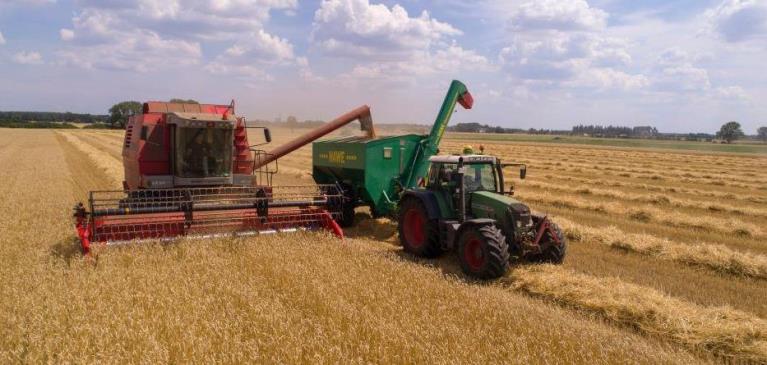
GreenStone recently spoke with Scott Welden, AgDirect Territory Manager, to discuss how members can manage machinery and equipment costs.
Owning every tractor and implement used to farm may be the conventional approach to managing a farm’s machinery lineup. However, that may not be the most economical, and can sometimes have lasting impacts on the bottom line. Leasing, renting or custom hiring work could be a more viable, cost-efficient alternative to outright ownership. In general, both strategies have pros and cons – which one works best for you depends on a few key variables. AgDirect makes it very convenient and easy to purchase, lease and refinance equipment.
“It’s very easy to justify both sides of the decision,” says Scott Welden, AgDirect Territory Manager based in Jonesville, Michigan. “Equipment today is becoming very specialized. It is a balancing act to optimize the use of your resources, capital, labor and time. Those factors all contribute towards determining whether somebody should own or lease equipment, or hire custom-work.”
Comparing Costs
A cost comparison is typically the first basis farmers calculate when determining whether to buy, lease, or rent a piece of machinery or finding someone who will do the job for a fee. But, that comparison needs to account for more than just the sticker price and how much capital it requires to get the unit. Hidden costs, that may not be apparent at first glance, often play an important part in the consideration—costs like cash flow, trade-in value variables and soft-costs for associated equipment. These factors should all be accounted for in determining when buying, leasing, or custom hiring is right for your farm’s financial health, according to Welden.
There’s a ripple effect: Some equipment is dependent on other equipment, which may also require additional labor that is added to the overall consideration. The owner of a manure tanker or dragline system, for example, might at first overlook the additional needs required for the equipment and set-up to support the manure application system. Does the existing tractor have the ability to efficiently operate the manure application equipment? Are there other pumps, motors, etc. needed? Likewise, does the dairy farmer have the time and labor needed to get the job done and still manage the rest of the day-to-day farm duties?
“The farmer will have to spend additional capital on that infrastructure and labor to efficiently handle his own manure,” Welden says. For that reason, milk producers may choose to custom-hire a manure handling service.
Helpful tools, like the newest version of AgDirect Mobile, are available for Apple™ and Android™ devices to help with such a task. AgDirect added a new functionality calculating “Cost Per Acre” on a purchase or lease. If you do not have the AgDirect Mobile app downloaded, now is the time to do it.
Cash Flow Considerations
In other cases, cash flow—which can fluctuate for some operations depending on the time of the year—could be a major deciding factor. For example, a custom fieldwork operation may occur during a time of year when capital is limited or being used to plant the crop. In this scenario, the cost of paying a custom operator during the growing season may be more financially burdensome than paying the same amount or more to purchase the equipment and defer payment to a later date. The implications to financing at a later time when cash flow is stronger may outweigh any potential increase in total cost.
“You may have the money to buy inputs, but hiring somebody to custom spray and pay for it in July might not work with today’s cash flow. But, you could buy a sprayer and defer the payments to December,” Welden says. “That allows you to use the equipment during a time of cash flow tightness and delay payment versus paying at the time of service. Cash flow is a big factor and sometimes can be very critical. With AgDirect, our flexibility with payment options and annual installments is very helpful.”
Look ‘Underneath The Financial Statement’
Examples like these underscore the need to closely examine your machinery needs and the costs before you make a decision whether to buy or use custom work. Welden recommends to look “underneath the cost analysis” to throw light on the factors that can impact your operation’s financial health in both cases.
For example, consider the milk producer who handles and applies his own manure vs. the dairy farmer who custom-hires their manure handling. Growers recognize the increased depreciation this task has on their fleet of equipment. “Should the re-sale and trade-in value of the farmer’s line of tractors be considered in the cost analysis… absolutely!” says Welden. Gains or losses associated with trade-in values contribute to the overall cost.
So, what is the best choice between buy, lease or custom hire? It really depends on each operation and its best use to generate the highest return on investment, Welden says. “It is all about asset utilization and using it to its fullest extent—optimizing resources, money, time and human capital.”
When buying or leasing is right for you, be sure to ask your local equipment dealer about AgDirect financing or stop in a branch near you to learn more about GreenStone's farm equipment loans.


